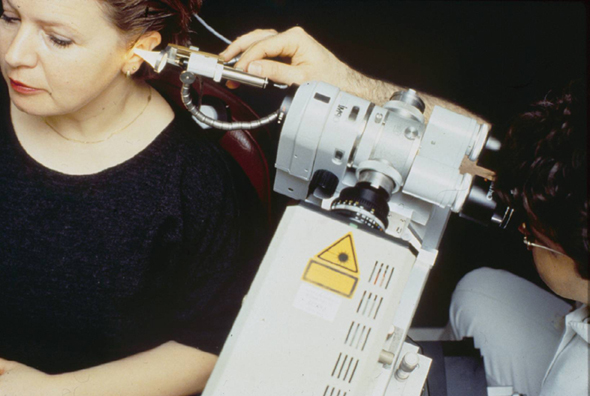
Laseraudiometer
Vibration of the ear drum in response to acoustic stimulation is
measured with a
laser Doppler vibrometer. This is the setup that we used in the
original publication (Rodriguez
Jorge et al., 1997) to demonstrate proof of principle. It is based
on a commercially available laserinterferometer. The interferometer
together with the head of a standard operating microscope are mounted on
a custom-built stand. The stand was so designed that even under the
total weight of interferometer and microscope (12 kg), the position of
the laser beam on the ear drum could be adjusted with an accuracy of 10
µm. The laser light derives from a helium-neon
laser
(wavelength 633 nm), which is coupled into the microscope,
and focused onto the ear drum to a diameter of about 70 µm. The light is
reflected
from the ear drum; its frequency is (Doppler) shifted by the motion of
the ear drum.
A portion of the reflected light returns back through the microscope
objective,
and the velocity of the ear drum is extracted from the frequency shift
of the light.
The device functions in the same way, for example, as a radar for
determining the
speed of a car: the Doppler effect. Mechanical conditions of the
middle ear and
the
cochlea can be determined from the dependence of ear-drum
velocity on
stimulus frequency and sound pressure.
© 2005 A. W. Gummer. Picture by
Dr. J. Rodriguez Jorge.